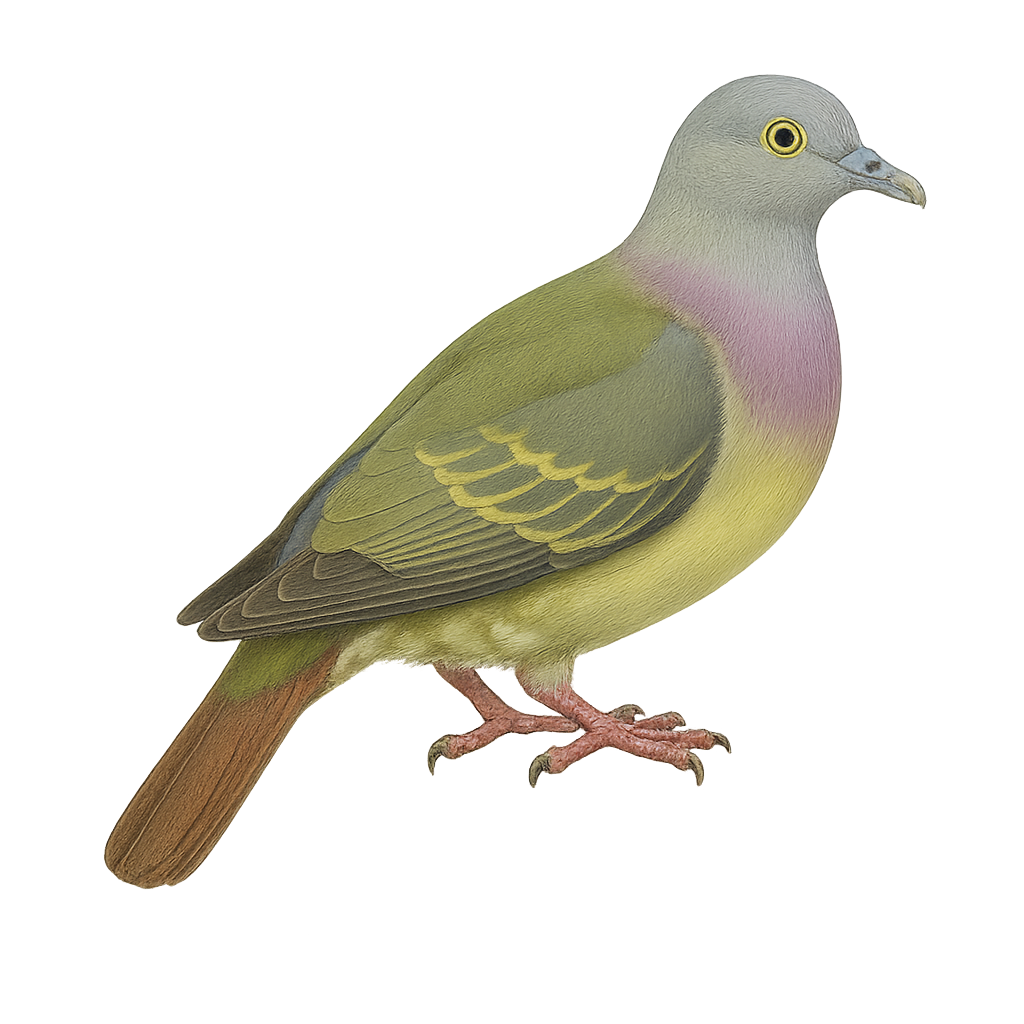Your wildlife photography guide.
Explore the grey-cheeked green pigeon in detail, study its behavior, prepare your shots.
Where to observe and photograph the grey-cheeked green pigeon in the wild
Learn where and when to spot the grey-cheeked green pigeon in the wild, how to identify the species based on distinctive features, and what natural environments it inhabits. The WildlifePhotographer app offers tailored photography tips that reflect the grey-cheeked green pigeon’s behavior, helping you capture better wildlife images. Explore the full species profile for key information including description, habitat, active periods, and approach techniques.
Grey-cheeked Green Pigeon
Scientific name: Treron griseicauda

IUCN Status: Least Concern
Family: COLUMBIDAE
Group: Birds
Sensitivity to human approach: Suspicious
Minimum approach distance: 10 m
Courtship display: October to November
Incubation: 16-18 jours
Hatchings: October to December
Habitat:
tropical forests, subtropical forests, mangroves
Activity period :
Primarily active during the day, with peak activity in the morning and late afternoon.
Identification and description:
The Grey-cheeked Green Pigeon, Treron griseicauda, is a medium-sized bird belonging to the Columbidae family. It is characterized by its vibrant green plumage, with a distinctive grey head and tail. This bird is primarily arboreal, inhabiting tropical and subtropical moist forests. It feeds mainly on fruits, playing a crucial role in seed dispersal. Its call is soft and melodious, often heard at dawn and dusk. Although generally discreet, it can be observed in small groups, especially near food sources. Its population is stable, but deforestation poses a potential threat to its natural habitat.
Recommended lens:
400 mm – adjust based on distance, desired framing (portrait or habitat), and approach conditions.
Photography tips:
To photograph the Grey-cheeked Green Pigeon, it is advisable to use a telephoto lens of at least 400mm to capture detailed images without disturbing the bird. Look for areas where fruits are abundant, as these birds are often attracted to food sources. Be patient and discreet, as they can be suspicious. Morning and evening are the best times to observe them, when the soft light highlights their vibrant plumage.
The WildlifePhotographer App is coming soon!
Be the first to explore the best nature spots, track rutting seasons, log your observations, and observe more wildlife.
Already 1 430 wildlife lovers subscribed worldwide

